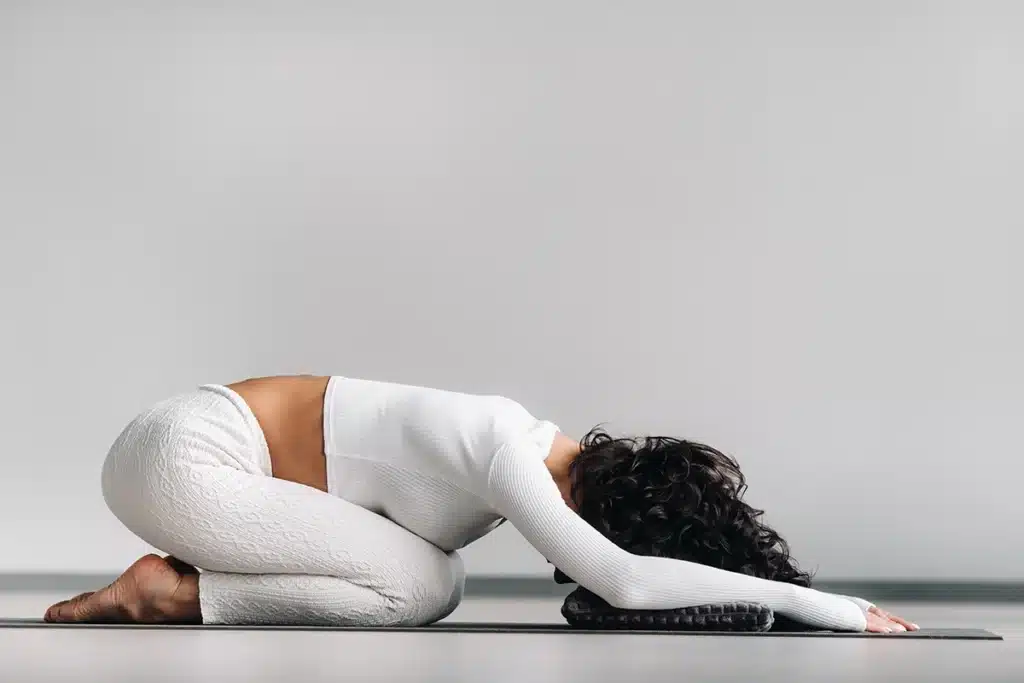
Table of Contents
ToggleUpper back pain is a common issue that affects people of all ages, often caused by poor posture, muscle strain, or underlying health conditions. In this comprehensive guide, we will explore 20 effective exercises for upper back pain relief, ensuring you have the tools to manage and alleviate discomfort.
Target Area: Neck and upper back.
Steps:
Benefits: This exercise helps in loosening the neck muscles, reducing tension in the upper back.
Target Area: Shoulders and upper back.
Steps:
Benefits: Shoulder rolls can ease tension and improve mobility in the upper back and shoulders.
Target Area: Shoulders.
Steps:
Benefits: Improves shoulder flexibility and strength, vital for upper back health.
Target Area: Upper back and shoulders.
Steps:
Benefits: Stretches the sides of the upper back and shoulders, alleviating tightness.
Target Area: Upper and mid-back.
Steps:
Benefits: This exercise targets rotational mobility in the spine, relieving stiffness.
Target Area: Entire spine.
Steps:
Benefits: Increases flexibility and eases tension in the spine.
Target Area: Lower back.
Steps:
Benefits: Stretches the lower back, providing relief from tension and pain.
Target Area: Upper and mid-back.
Steps:
Benefits: Stretches and mobilizes the thoracic spine, reducing upper back pain.
Target Area: Upper back.
Steps:
Benefits: Strengthens the muscles in the upper back, crucial for posture.
Target Area: Shoulders and upper back.
Steps:
Benefits: Targets the rear shoulders and upper back, improving posture and strength.
Target Area: Shoulder blades.
Steps:
Benefits: Enhances shoulder blade mobility, essential for upper back support.
Target Area: Upper back and shoulders.
Steps:
Benefits: Improves posture and shoulder mobility, reducing strain on the upper back.
Target Area: Upper back and shoulders.
Steps:
Benefits: Strengthens the upper back and shoulders, crucial for maintaining good posture.
Target Area: Upper back.
Steps:
Benefits: Targets the latissimus dorsi, a key muscle for upper back strength.
Target Area: Entire back.
Steps:
Benefits: Strengthens the back muscles, supporting the spine.
Target Area: Chest and shoulders.
Steps:
Benefits: Stretches the chest and shoulders, counteracting the effects of poor posture.
Target Area: Back and shoulders.
Steps:
Benefits: A gentle stretch that relieves tension in the back and shoulders.
Target Area: Inner thighs, hips, and lower back.
Steps:
Benefits: This stretch helps to open up the hips and lower back, which can indirectly alleviate tension in the upper back by improving overall posture and alignment.
Target Area: Neck and upper back.
Steps:
Benefits: Stretches the neck and upper back, reducing tension.
Target Area: Neck and upper back.
Steps:
Benefits: Alleviates neck and upper back tension, promoting relaxation.
Upper back pain can arise from various factors, and understanding these causes is the first step to effective treatment.
Before diving into exercises, it’s crucial to explore home remedies that can provide additional relief.

Adopting healthy lifestyle habits can significantly impact upper back pain relief.
Recognizing when to seek medical assistance is crucial for effectively managing upper back pain.
Understanding when to manage pain at home and when to seek medical advice is key to effective upper back pain relief.

Prevention is always better than cure, especially when it comes to upper back pain. Here are some tips to keep your back healthy:
Dealing with upper back pain can be challenging, but with the right approach, it is manageable. This guide has provided insights into the causes of upper back pain, effective exercises for relief, lifestyle changes for prevention, and guidance on when to seek professional help.
By incorporating these strategies into your daily routine, you can achieve significant improvements in your upper back health.

Remember, each person’s journey to pain relief is unique. It’s important to listen to your body and adjust these exercises and tips to suit your individual needs.
Don’t hesitate to seek professional advice if your pain persists or worsens. Upper back pain relief is within your reach, and this guide is your companion on this journey.
Upper back pain doesn’t have to be a permanent part of your life. With these 20 effective exercises for upper back pain relief and lifestyle adjustments, you can take control of your back health. Embrace these practices and enjoy a more comfortable, pain-free life.
If you’re dealing with persistent upper back pain and need professional advice, don’t hesitate to reach out to us. Our team at Long Island Neuroscience Specialists is here to assist you on your journey to relief. Call us for personalized support and expert guidance in managing your upper back pain.
Thank you for trusting us on your journey to better health. Here’s to a stronger, healthier back!
GET IN TOUCH +
285 Sills Road
Building 5-6, Suite E
East Patchogue, NY 11772
(631) 475-5511
184 N. Belle Mead Road
East Setauket, NY 11733
(631) 675-6226
GET IN TOUCH +
285 Sills Road
Building 5-6, Suite E
East Patchogue, NY 11772
(631) 475-5511
184 N. Belle Mead Road
East Setauket, NY 11733
(631) 675-6226
SUBSCRIBE TO OUR NEWSLETTER +
Send us a Google review. Click this link and let us know how we did!
Review us on Yelp too.